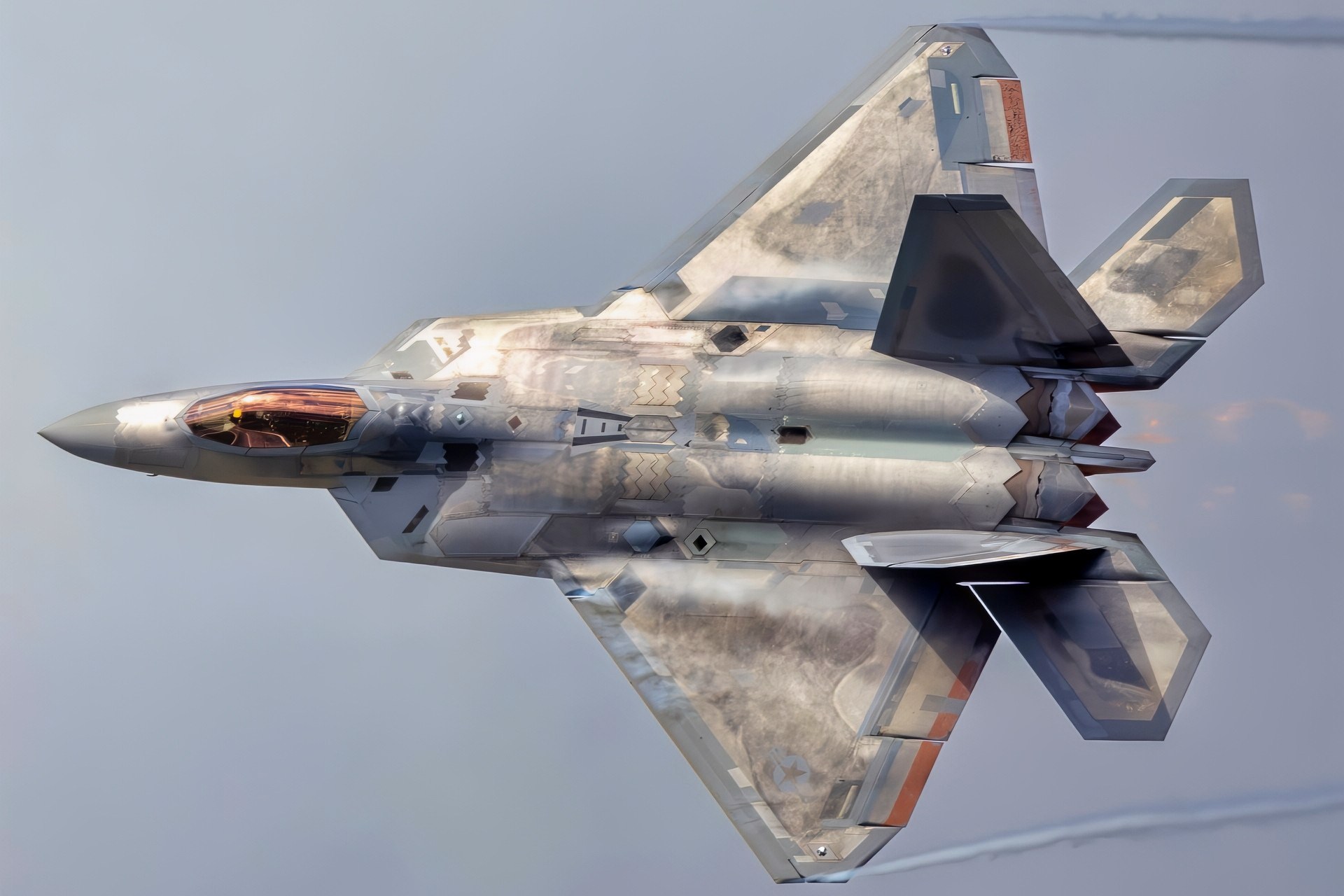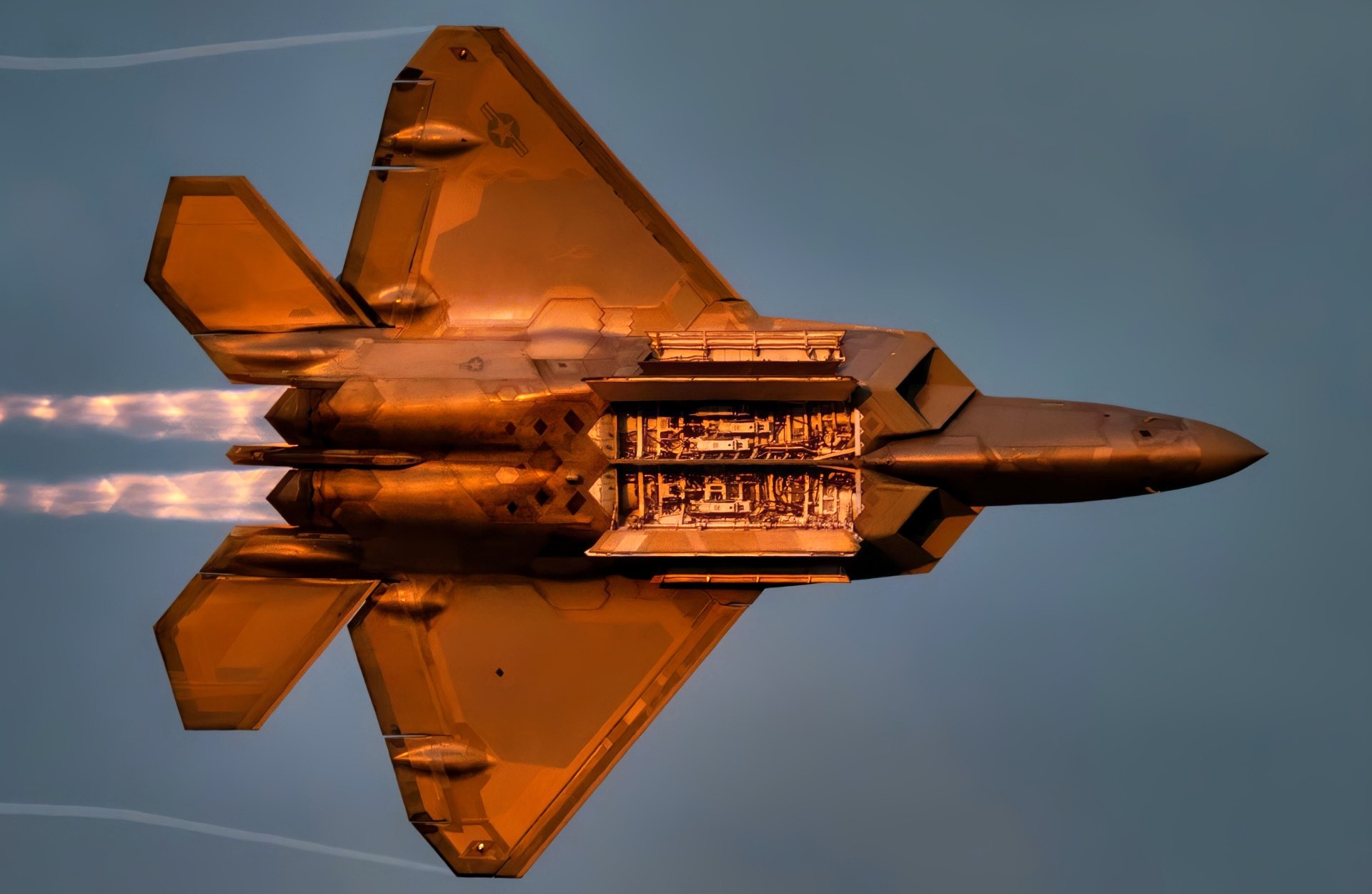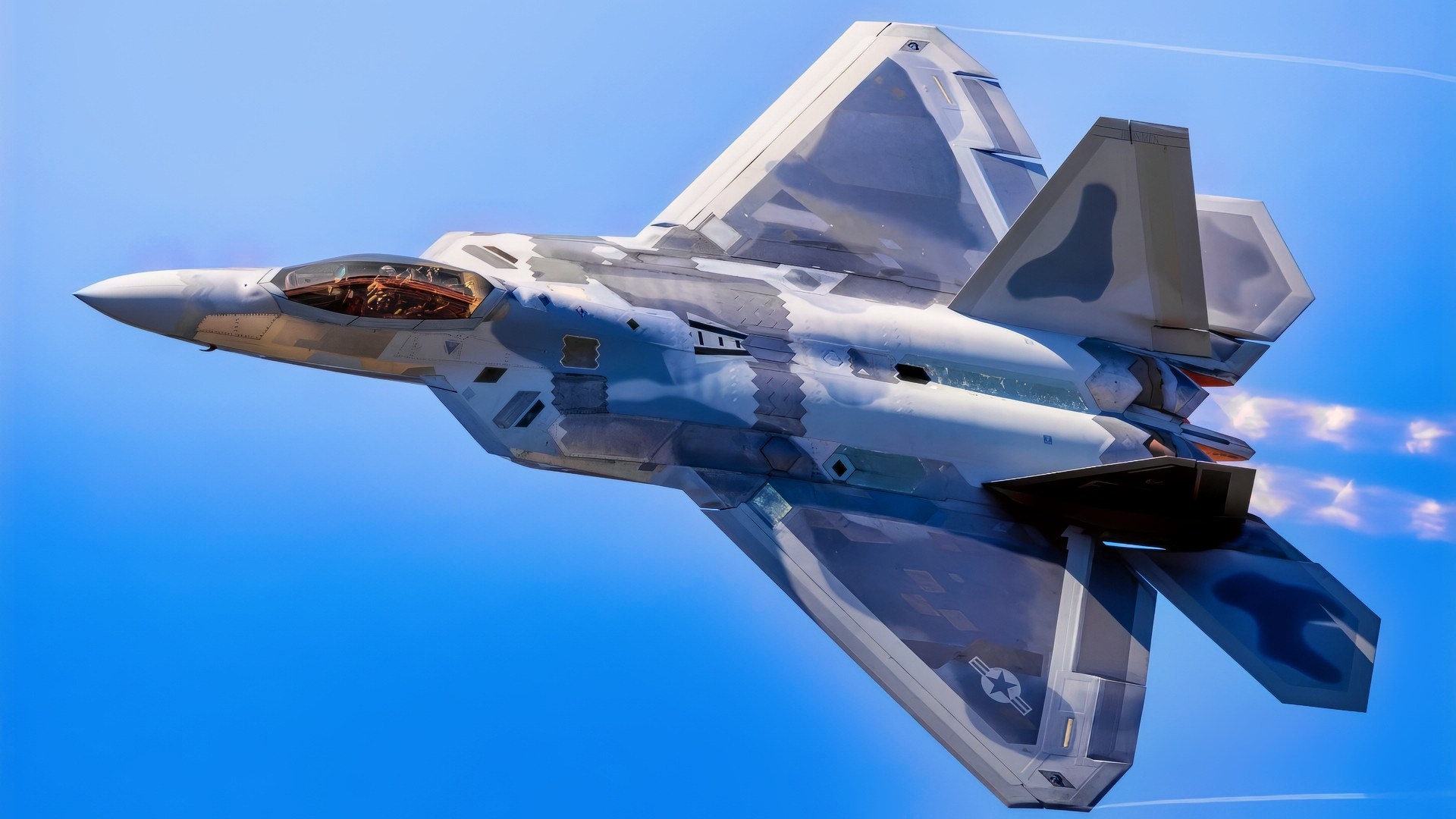Key Points and Summary – The F-22 remains America’s top air-superiority jet, but NGAD’s F-47 won’t arrive in mass for years.
-A “Super Raptor” refresh—adding next-gen sensors, EW, upgraded coatings, and cockpit avionics—would extend the fleet’s relevance into the 2040s and hedge against NGAD delays.

An F-22 Raptor performs an aerial demonstration at Naval Air Station Oceana, Virginia, Sept. 21, 2025. Designed for both air superiority and ground attack missions, the F-22 demonstrates the flexibility and power of fifth-generation fighter technology. (U.S. Air Force photo by Staff Sgt. Lauren Cobin)
-With production long closed, upgrading existing airframes is the fastest, cheapest path to near-term combat power, preserving stealth sustainment skills and deterrence in high-end theaters.
-Critics note F-22 range limits and the risk of diverting funds from NGAD. Still, a fifth-gen-plus bridge buys time—keeping lethal capacity on the ramp while the sixth-gen family of systems scales up.
Why We Need the F-22 Super Raptor
The F-22 Raptor is still in the U.S. Air Force’s premier air-superiority fighter, but the service is already looking forward to its successor, the F-47 – the crewed element of the Next Generation Air Dominance (NGAD) program.
With a sixth-generation fighter very much in the pipeline, it’s hard not to wonder why the Air Force and the Pentagon would invest so heavily in an upgraded “F-22 Super” variant.
The plan is to heavily upgrade the Raptor so that its lifespan is extended into the 2040s and its lethality is dramatically increased.
Under the proposal, the proven fifth-generation airframe would be fitted with new sensors, improved radar-absorbent coatings, electronic-warfare systems, and cockpit avionics similar to those planned for the upcoming NGAD F-47 fighter.

NGAD F-47 Fighter. Image Credit: Creative Commons.

NGAD Artist Photo. Image Credit: Creative Commons.
In essence, it would be a “fifth-generation-plus” bridge – a stopgap between today’s stealth technology and sixth-generation airpower. And that’s precisely the point: F-47 may be coming, but an upgraded Raptor could provide improved readiness in the meantime.
Still, there’s a lot to consider—and some argue we may not actually need it.
The F-22 and NGAD
The F-22 entered service in 2005 and was designed as a stealthy twin-engine air-superiority fighter capable of supercruise.
Its low observability, advanced sensor-fusion technology, high thrust, and maneuverability gave the U.S. new advantages—and it even maintained its ground-attack capabilities.
Despite its stealthy design, the F-22 carried weapons. It’s lethal, and it can use its stealth to support other assets.
But given the growing sophistication of air defenses and the capabilities of America’s peer adversaries—most notably China and Russia—the F-22 is facing increasing pressure. The U.S. Air Force, therefore, is pursuing upgrades to ensure that the Raptor stays viable into the 2030s and beyond.
NGAD is designed to go above and beyond what the F-22 can already do.
It promises a “family of systems”—not just a single aircraft—whereby the F-47 will serve as a crewed fighter as part of a larger network of unmanned “loyal wingmen” and advanced sensors. The program is well underway, and in March 2025, USAF officially awarded the contract to Boeing to develop America’s next-generation fighter.
Based on what we know so far, the F-47 will have a combat radius of more than 1,000 nautical miles, will reach speeds greater than Mach 2, feature the most advanced stealth technology in the world, and be easier and cheaper to maintain than its fifth-generation predecessors.

An F-22 Raptor assigned to the U.S. Air Force F-22 Raptor Demonstration Team
performs aerial maneuvers at Experimental Aircraft Association (EAA) AirVenture
Oshkosh in Oshkosh, Wis., July 29, 2023. The demonstration team performs aerial
maneuvers to showcase its combat capabilities to a public audience. (U.S. Air Force photo by Bill Guilliam)
The concept is explicitly intended to replace the F-22 as the Air Force’s premier air-dominance platform.
But that doesn’t mean the F-22 will be replaced immediately.
Far from it, in fact.
Why We Need the F-22 Super
In an ideal world, every F-22 would be replaced by an NGAD fighter, and the U.S. Air Force would be the best equipped it has ever been. But that scenario is not only unlikely, it’s impossible.
Upgrading the F-22 is a quicker, cheaper path to increased capability at a time of rising global tensions.
Without taking action now, there is a risk of a serious capability gap when the existing fleet ages out or is no longer fully viable, and when the F-47 and the broader NGAD family become operational in meaningful numbers.
Production of the F-22 stopped years ago, and adding new airframes isn’t feasible. Upgrading the fleet, however, is.
Doing so could extend the aircraft’s useful life into the 2040s and maintain America’s deterrent in high-end theaters in the short- to medium-term.
From a cost and urgency perspective, using existing airframes to field an improved capability more quickly offers tremendous value.
It also preserves skills in America’s industrial base in terms of stealth maintenance, logistics, and avionics integration while NGAD ramps up and begins to be fielded in significant numbers.
Not only that, but if the F-47 program experiences delays or cost overruns—as history teaches us is likely— then having an upgraded F-22 provides a vital insurance policy.
That being said, there are reasons some are skeptical. Investing substantial funds in a legacy platform, for instance, may divert resources from the next-generation system. From this perspective, it’s clear that planners must maintain a delicate balance.
The F-22 was, after all, designed for a different era.
It offers a shorter range, older architecture, and limited production numbers. The truth is that the F-22 might not be ideal for an Indo-Pacific fight where distances are enormous – but it’s also America’s best bet while NGAD proceeds.
The Air Force expects NGAD’s F-47 to fly by 2028 and begin entering service sometime in the early 2030s, with roughly 200 aircraft planned for procurement – though full operational numbers may not materialize until the late 2030s.
In the meantime, why not field an upgraded Raptor?
About the Author:
Jack Buckby is a British author, counter-extremism researcher, and journalist based in New York. Reporting on the U.K., Europe, and the U.S., he works to analyze and understand left-wing and right-wing radicalization, and reports on Western governments’ approaches to the pressing issues of today. His books and research papers explore these themes and propose pragmatic solutions to our increasingly polarized society. His latest book is The Truth Teller: RFK Jr. and the Case for a Post-Partisan Presidency.
More Military
‘Skipper, We Have Been Hit’: Tiny Nuclear Sub ‘Sank’ $4.5 Billion U.S. Navy Aircraft Carrier
China’s Military ‘Quantum Leap’ Doesn’t Add Up
Russia’s Air Defenses Are Springing Leaks—and Ukraine Is Exploiting Them
Japan Might Be Ready to Fight for Taiwan. Would America Do the Same?










